Árbæjarsafn (Arbaer Open Air Museum), Reykjavik
Stroll around Reykjavik’s pleasant Arbaer Open Air Museum on a crisp wintery day. The history of Arbaer farm helps to anchor this assemblage of buildings from around Reykjavik.
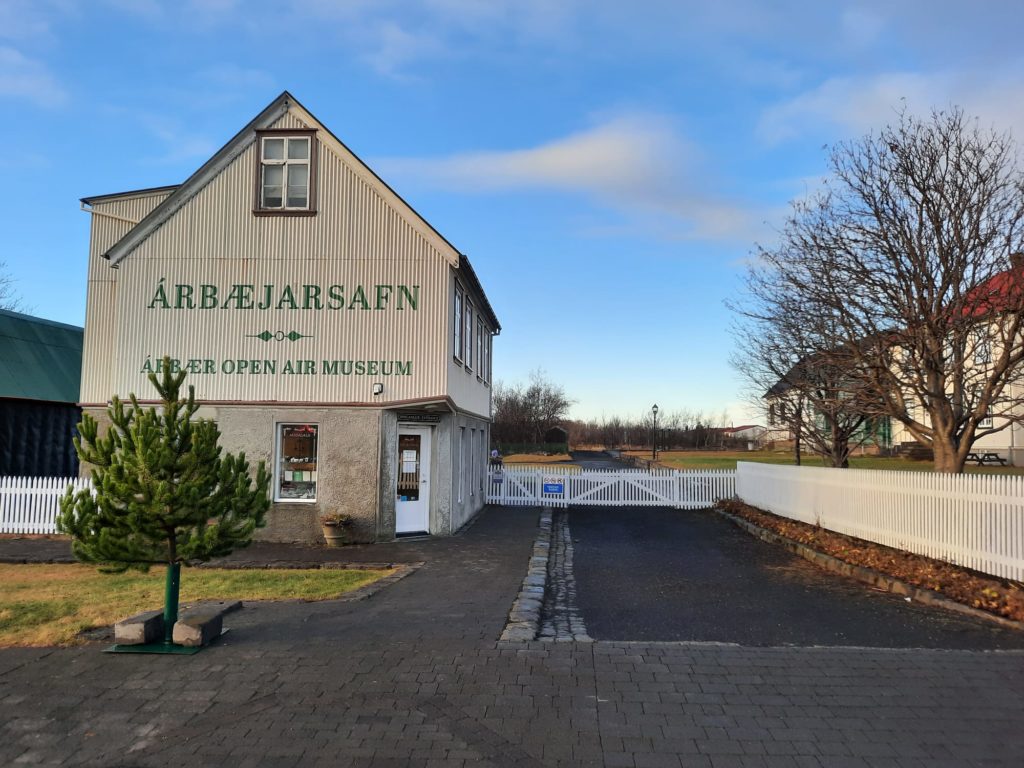
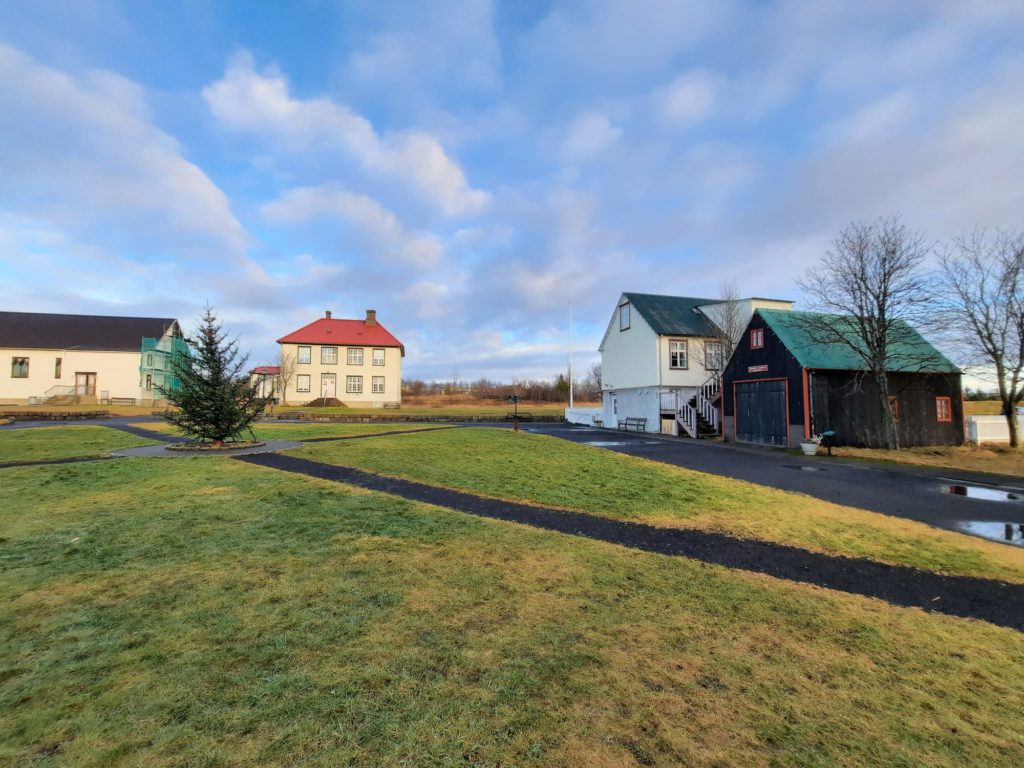
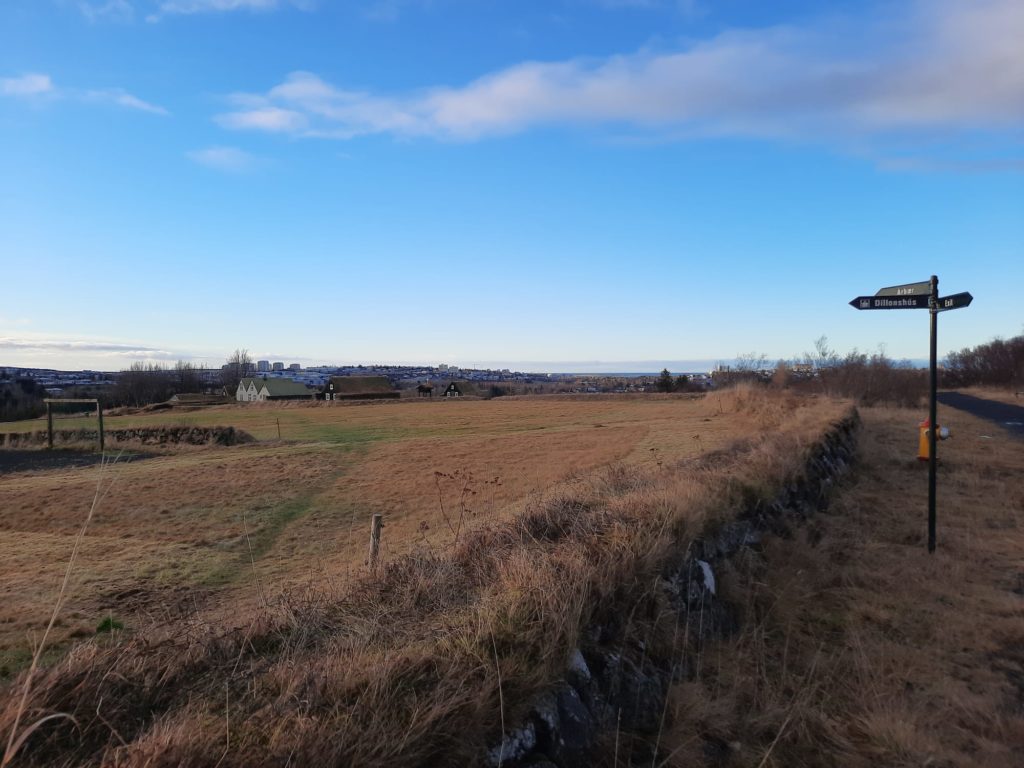
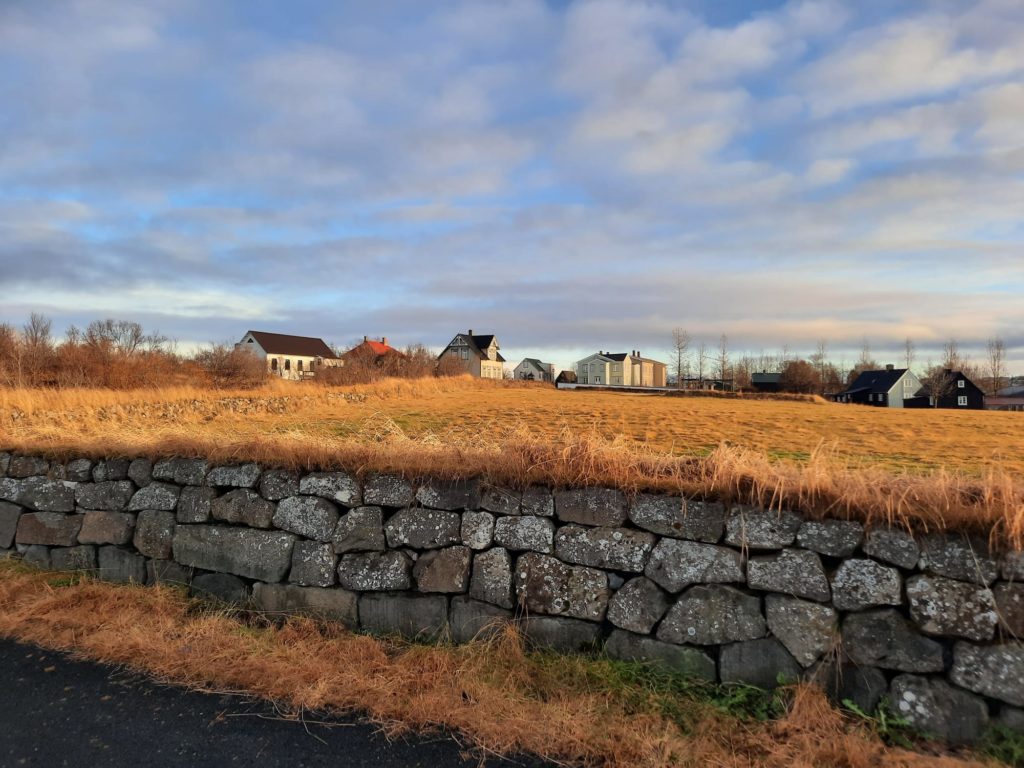
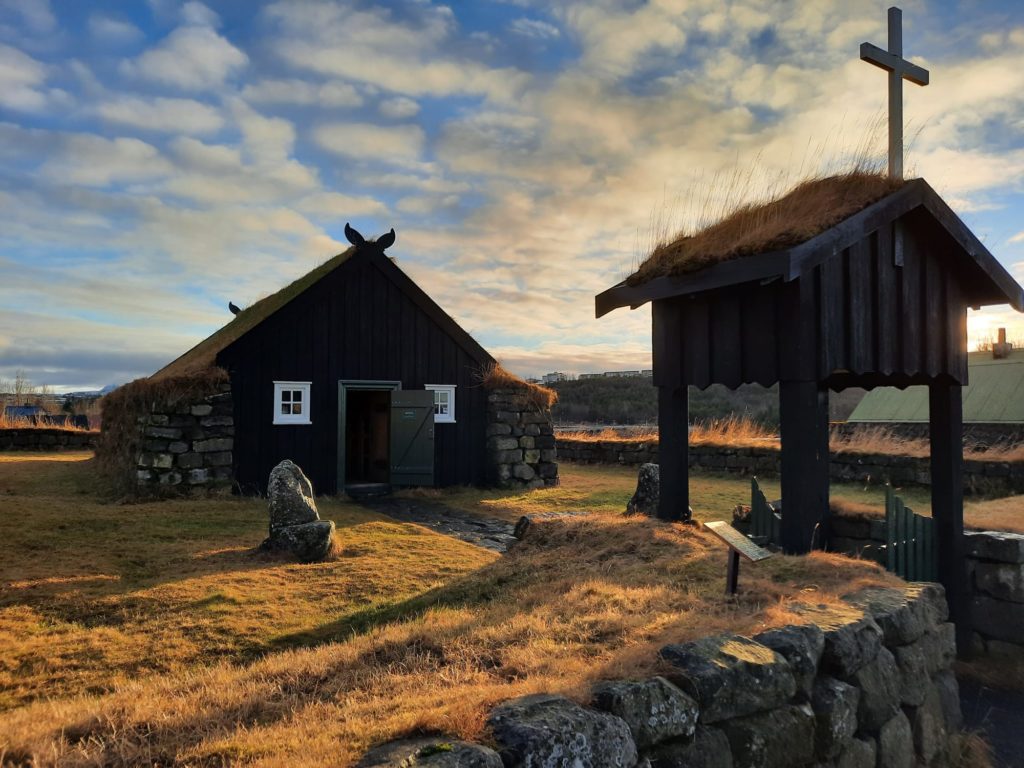
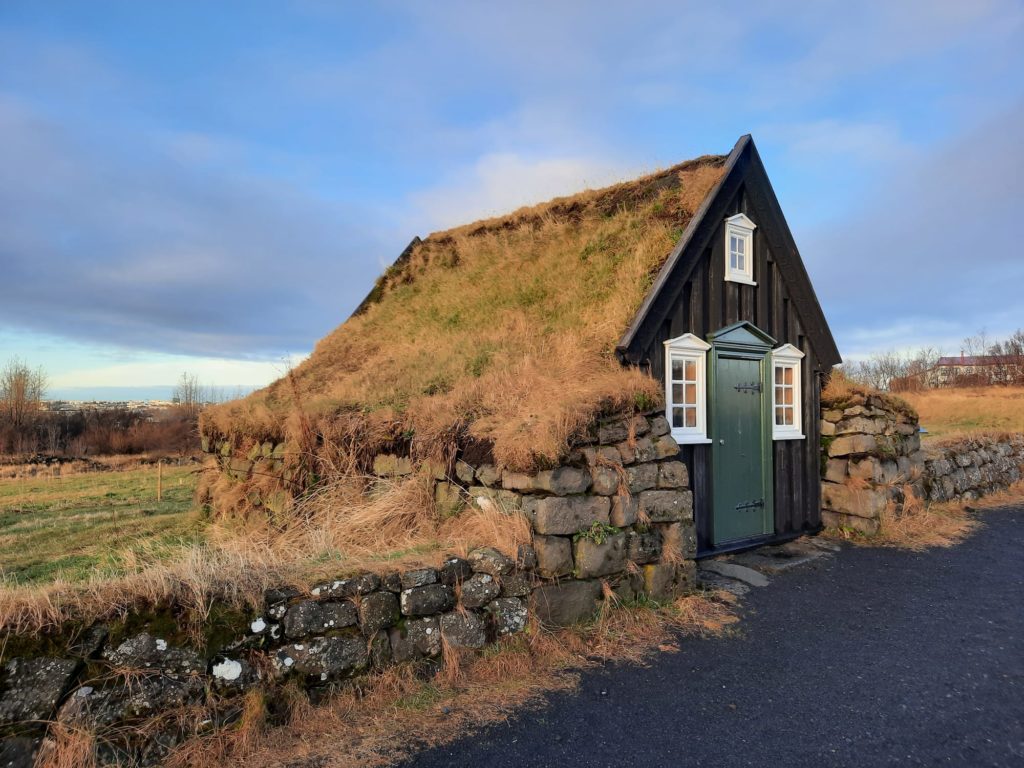
A Museological Expedition
A long weekend in Reykjavik allowed me just enough time to squeeze in a visit to the open air museum at Árbær, part of Reykjavik City Museum. Once this was a day’s journey outside Iceland’s capital, but today it is a short(ish) bus ride. Conveniently, the bus is direct from the National Gallery of Iceland which I visited prior to this expedition. Inconveniently, it’s a bit of a hassle to get buses in Reykjavik, as you need to have an app installed or to produce exact change. Nonetheless I made it, and enjoyed seeing a few suburbs on the way.
I really like outdoor museums, which was the reason I chose to head out to Arbaer with so many city centre museums available. Generally they make a concerted effort to preserve the history of ordinary people. It’s relatively easy for important buildings to survive. A lot of money is typically invested in them, and they tend to be well-built. Ordinary people’s houses have a much worse survival rate. They often survive only by accident, and then must be noticed and preserved before they fall foul of the imperative to redevelop and replace. So Arbaer Open Air Museum was, in my imagination, a little like a retirement home for some of Reykjavik’s oldest surviving buildings. Let them get out and breathe the fresh air again rather than being overshadowed by newer, bigger neighbours.
If you are interested in this kind of history but don’t have time to head out to Arbaer, please check out my earlier post on The Settlement Exhibition and Aðalstræti 10. The latter is one of the oldest remaining houses in Reykjavik and tells the story of life in the city over the centuries.
Finally a quick note on spelling: the correct Icelandic spelling is Árbær. However, because this includes a couple of characters we don’t have in English, I’m mostly using Arbaer to make it easier for prospective visitors to find this post when searching online. In a few places I’ve used Árbær when I’m referring very specifically to the location or the farm.
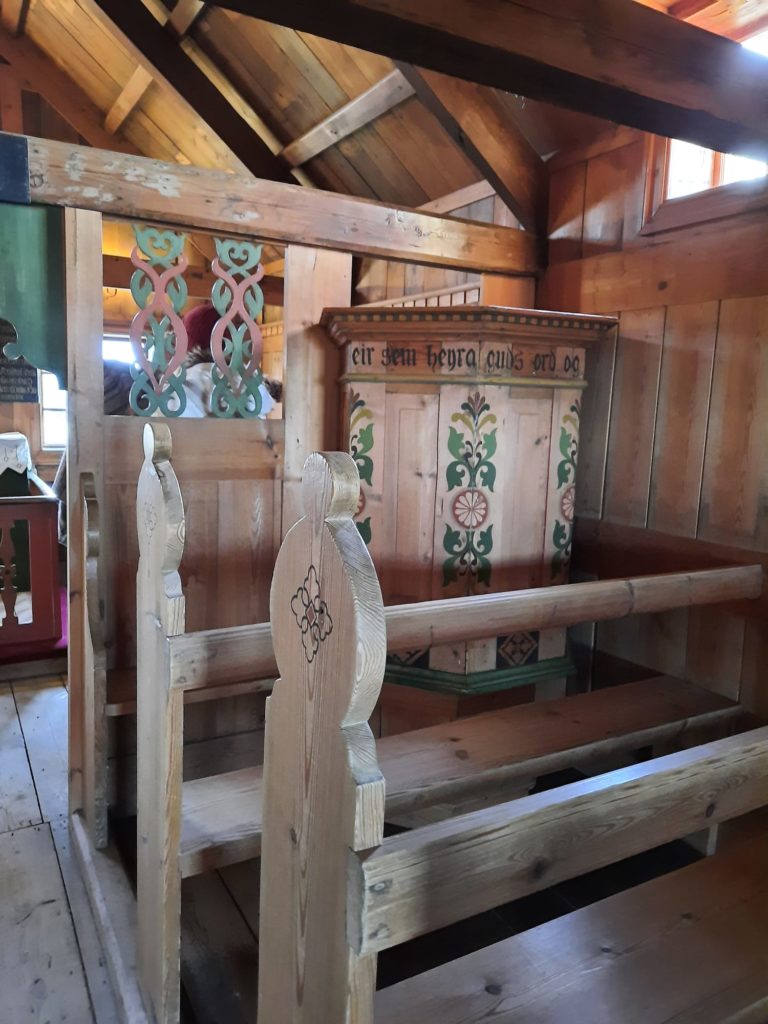
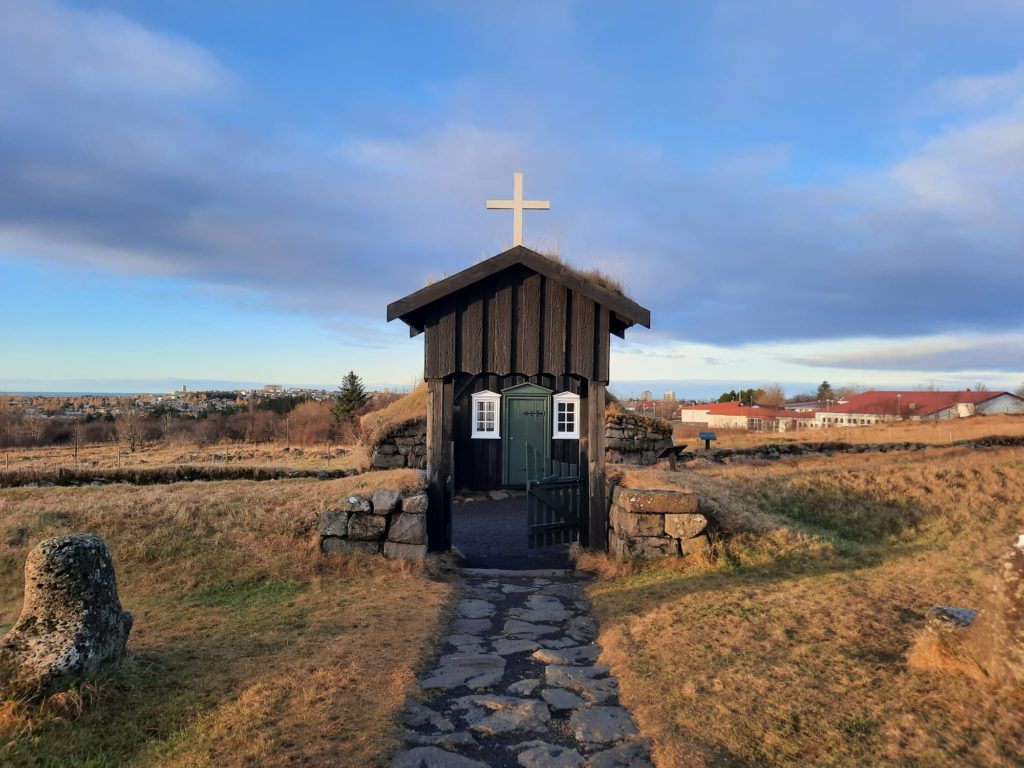
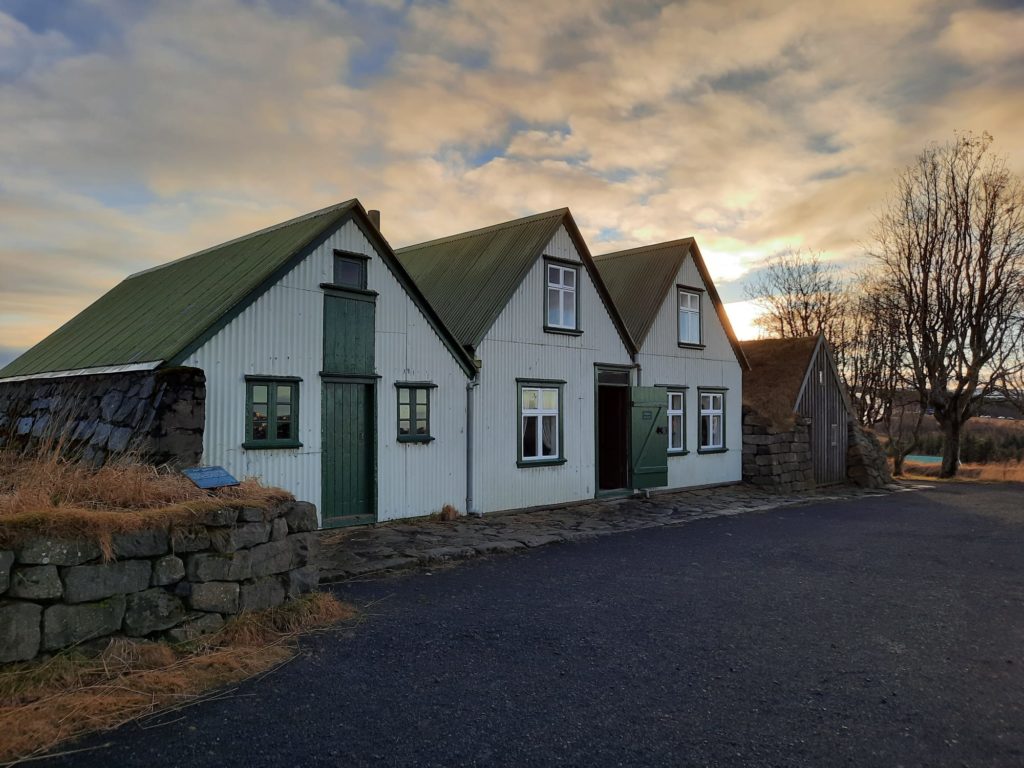
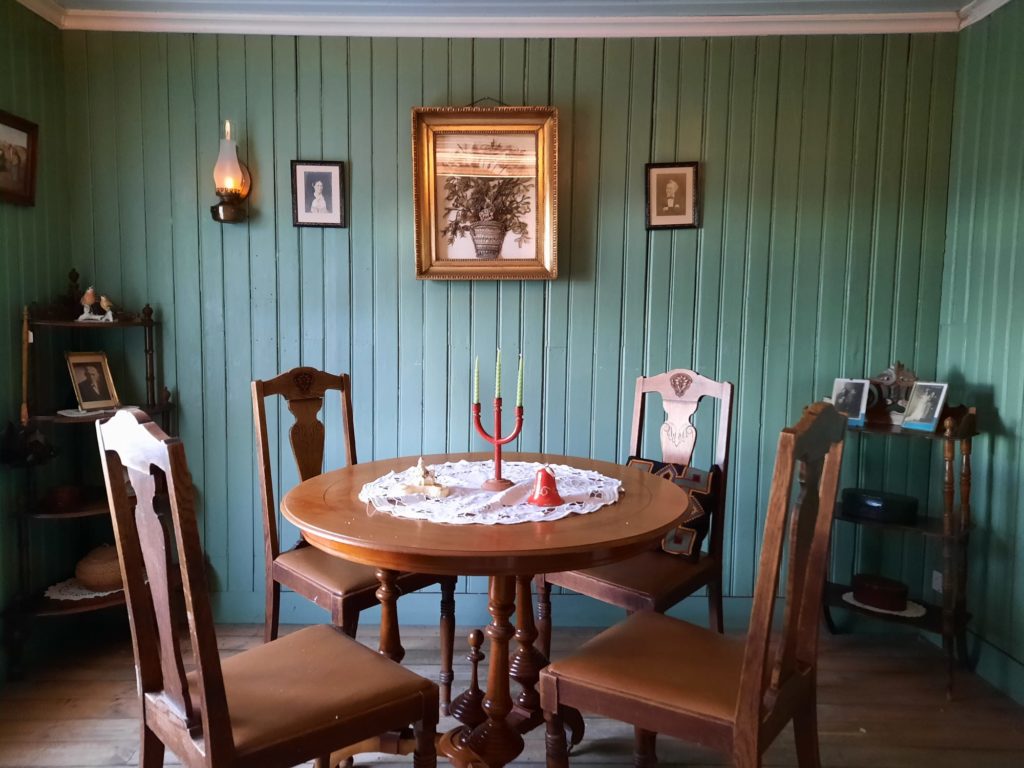
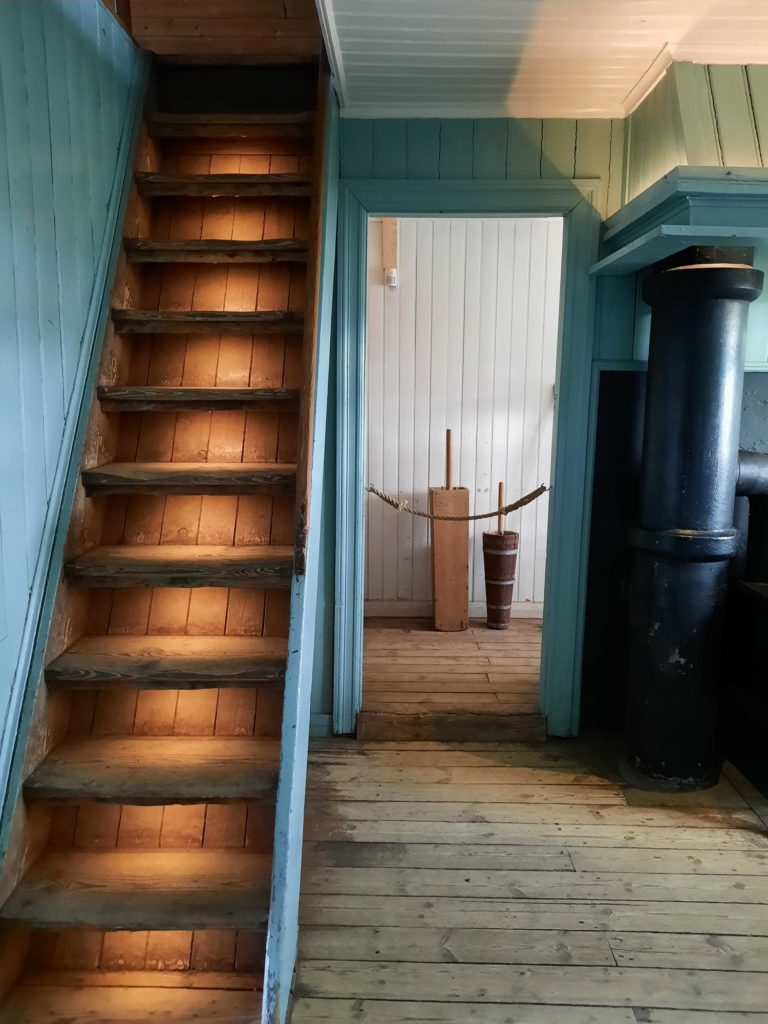
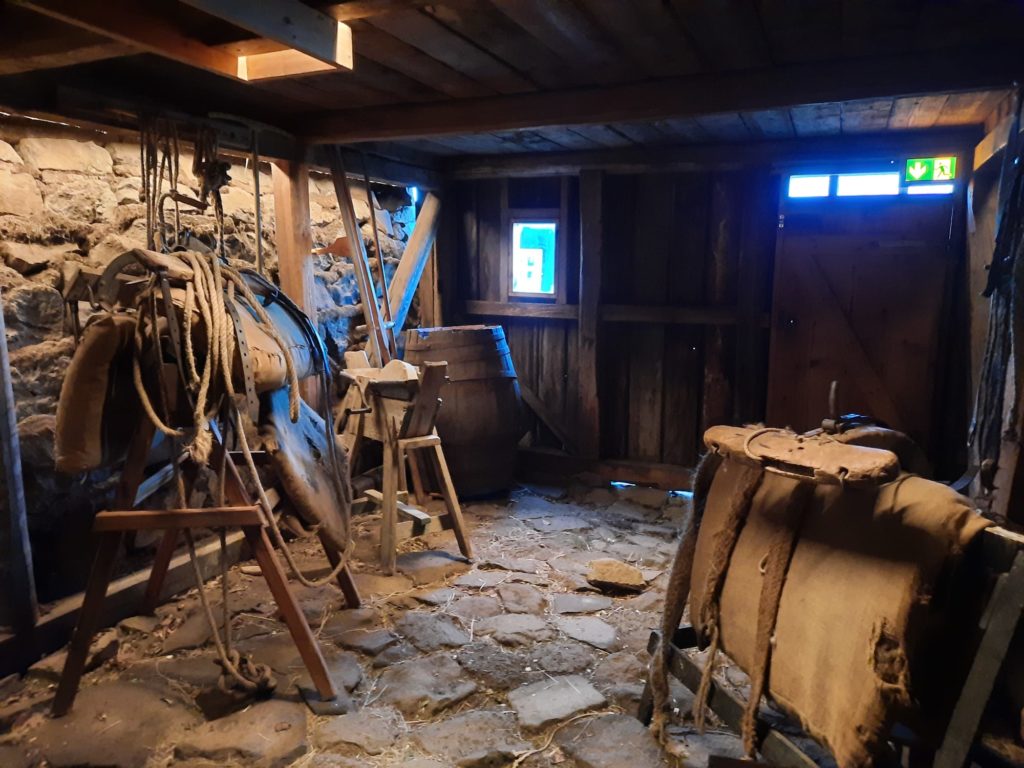
Árbær: Historic Farm And Museum Starting Point
Although the majority of the buildings at the Arbaer Open Air Museum have come here from other parts of the city and surrounding areas, there is a historic kernel which sparked the whole project. This is the farm Árbær. Historically a day’s journey from Reykjavik, Árbær has been settled since around the 10th Century. The buildings are not original: the turf and stone structures have been built and rebuilt over the centuries and the current ones date to between 1891 and the 1920s. The last inhabitant left Árbær in 1948. Because of its convenient location as a stopping point on the way to Reykjavik, it also operated as an inn, with guestrooms and stables for horses. Other than that, it was mostly home to tenant livestock farmers.
A lot of Icelandic farms followed a model where the animals were on the ground floor, with the human inhabitants living above and benefiting from the animals’ warmth. Because of Árbær’s function as an inn it was a little different, but you can still see the tendency towards small upstairs living spaces built for shared warmth. There’s a workspace and cowshed where you can really see the how building with turf works. And can also see how the animals themselves have changed: a cow who resided more recently at the Arbaer Open Air Museum needed an extension to her stall because she was too long to fit in.
Árbær is a good choice to begin with at the museum, to ground you in what life was like here. And also how the museum has evolved. Nearby is a reconstructed church and a vestry: there was a tradition of landowners having their own church and employing a clergyman directly. The church has had an interesting history: taken apart for its timbers and later stored, there wasn’t too much that was reusable so a lot is now reconstructed. An exception was the pulpit, recycled as a kitchen cupboard! You can even see a door cut into it.
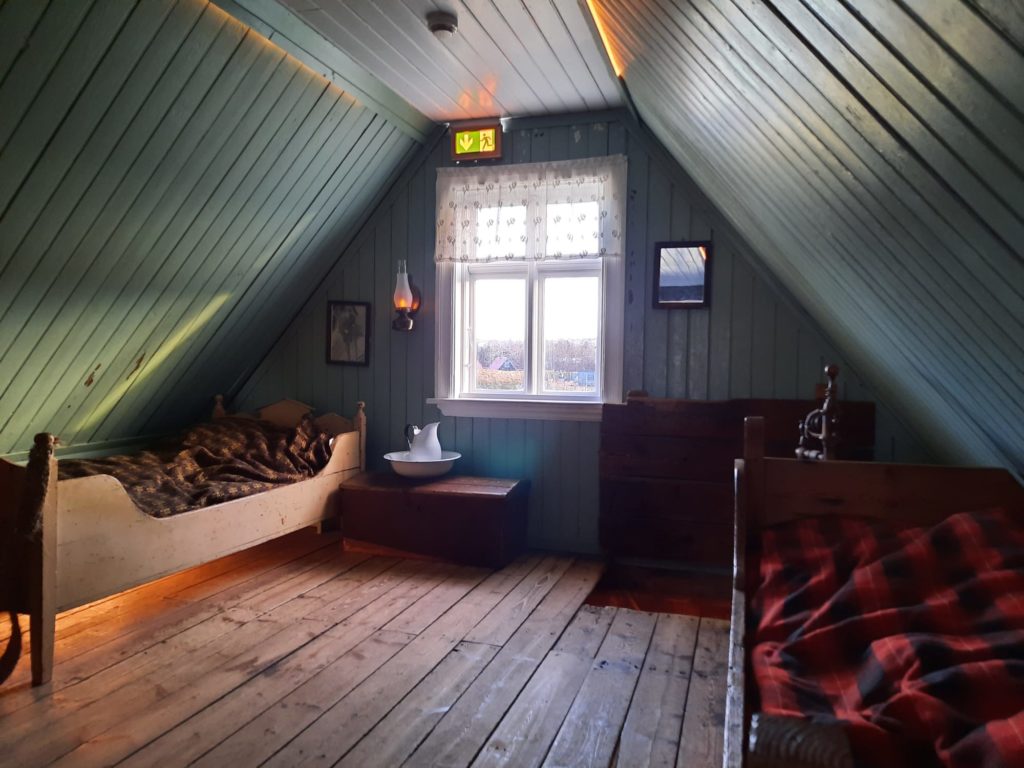
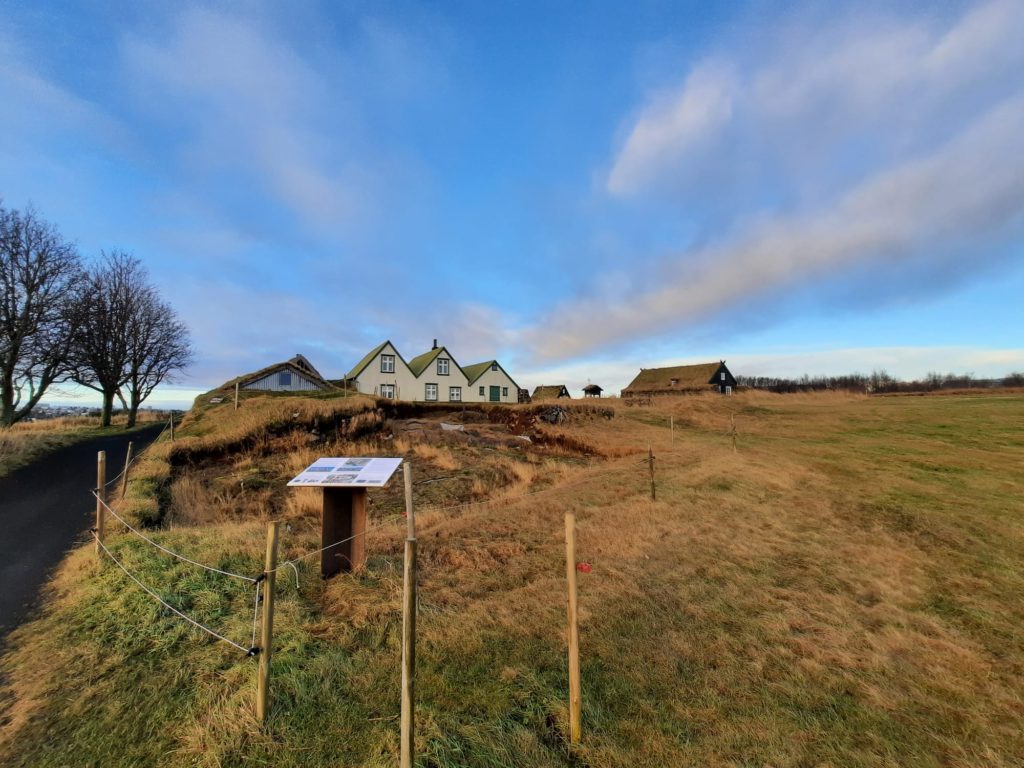
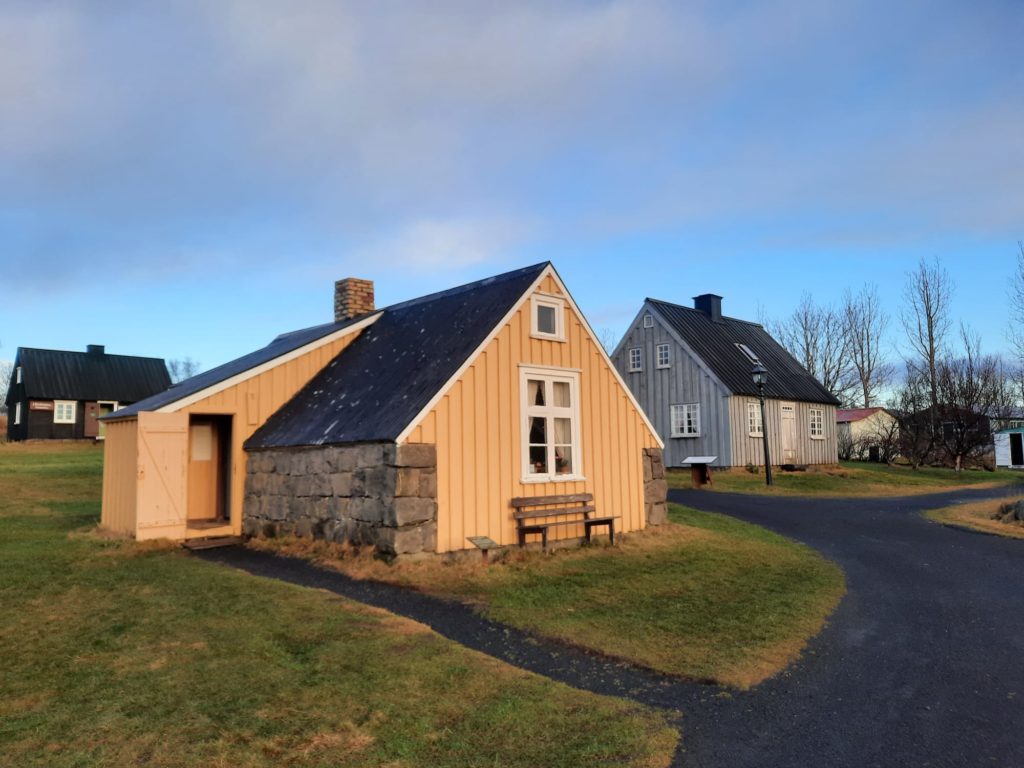
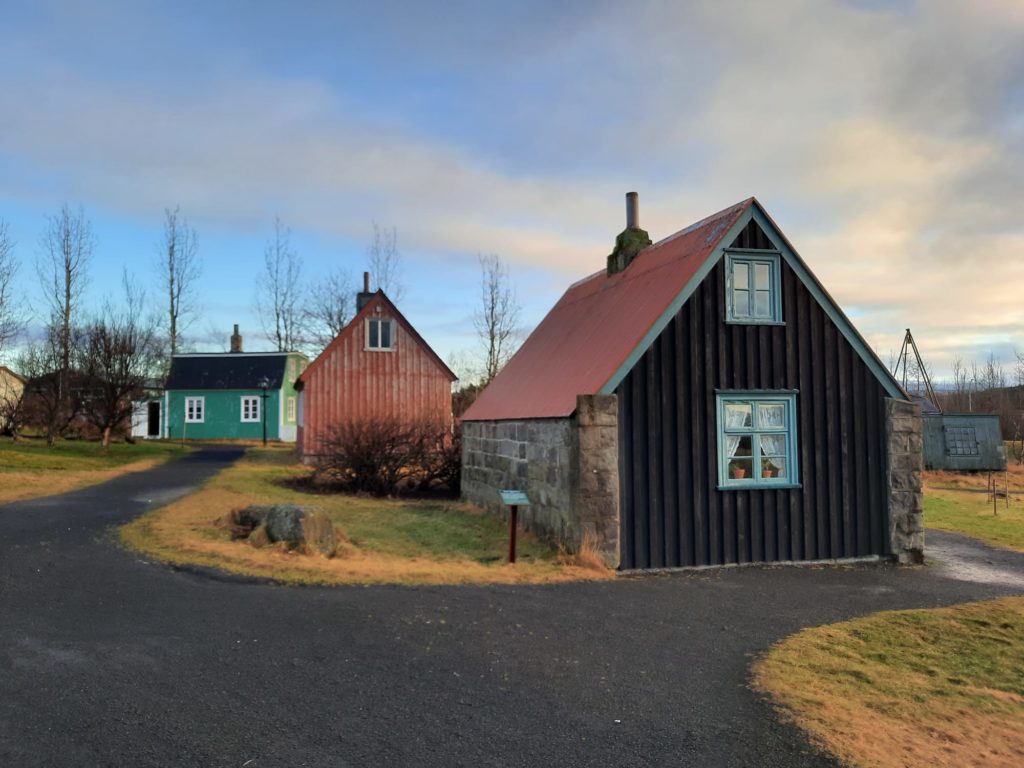
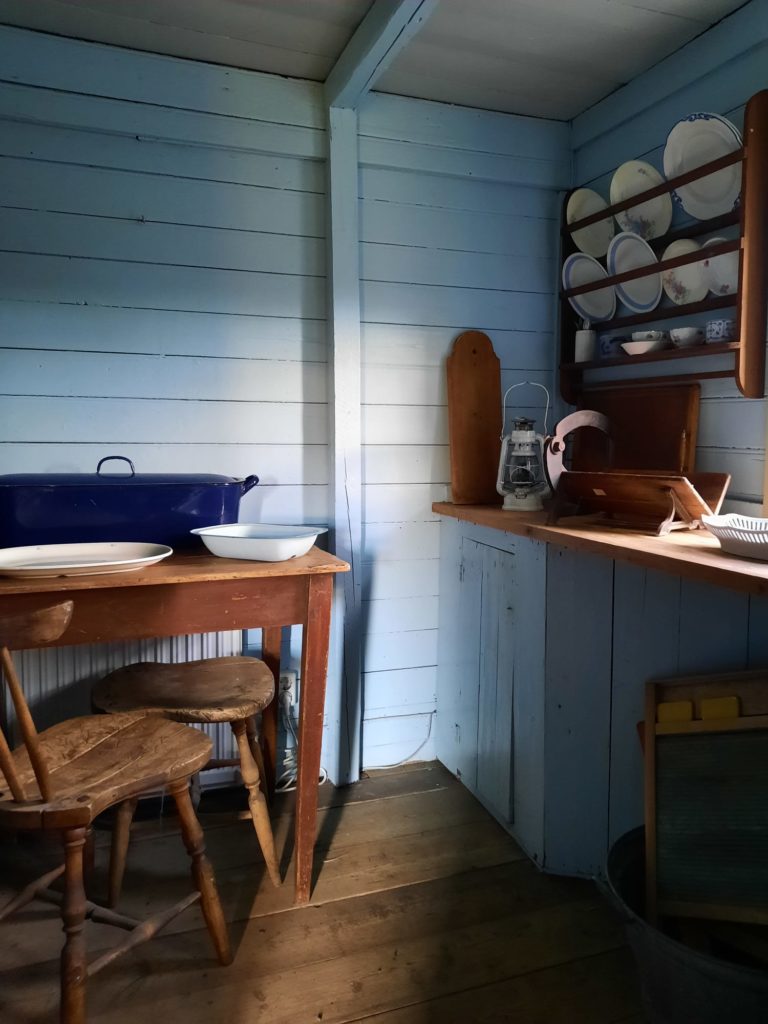
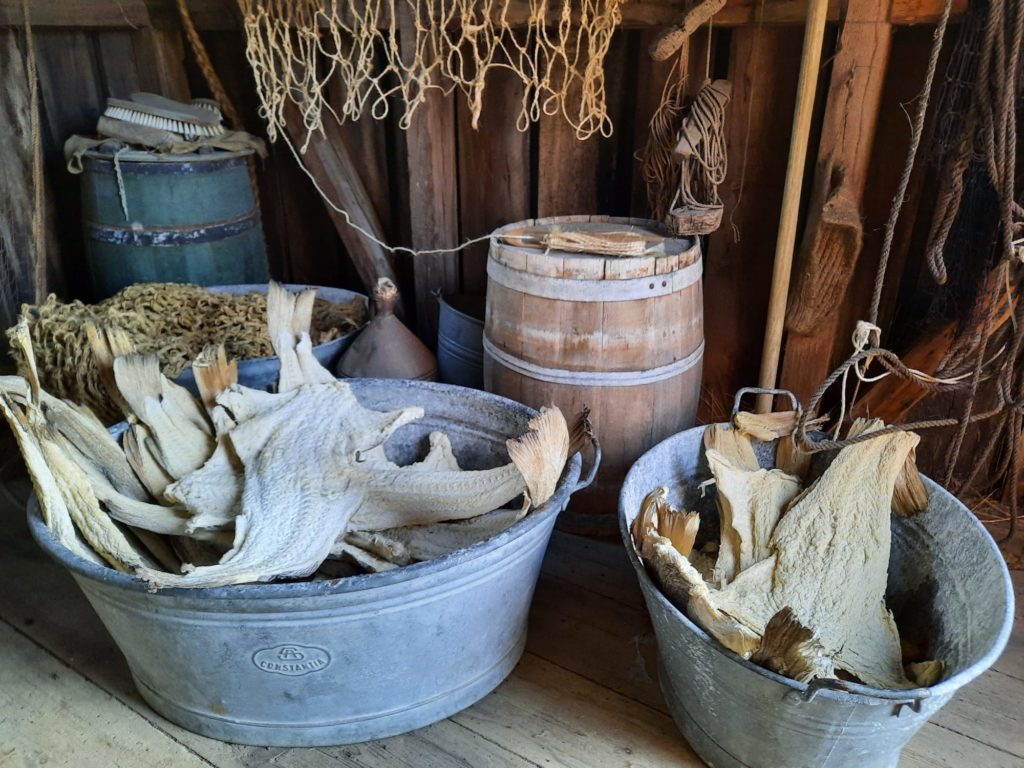
Exploring The Rest Of Arbaer Open Air Museum
Once you’ve got the lay of the land at Arbaer, the rest is straightforward. The houses are grouped together into, for instance, fishermen’s houses and city buildings and a mining operation. I happened to arrive at Arbaer Open Air Museum just at opening time (1PM in winter). This is also the departure time for a guided tour, which benefited my understanding of the place greatly. We went to see Árbær first, and then headed next to see some fishermen’s houses. After that we made our own way, with a good understanding of the history of Reykjavik and its buildings under our belts.
Most of the houses are open to visit (not all – not sure if this is seasonal) and have furniture and objects inside. They represent particular moments in time: for instance we saw one house prepared for the visit of a Danish King in the early 20th Century. It helps to bring the spaces to life and see how people really lived in them. Like renting or buying a house: it looks big until you get all all your furniture in there!
On the tour I heard an interesting fact about Icelandic society. Because it was under colonial rule for a long time, trade was a privilege the government granted to a select few (normally not Icelanders). This inhibited the growth of a merchant class. So most people worked: as farmers or as fishermen. This really comes across at Arbaer. The houses are modest, and the lives of those who lived there simple.
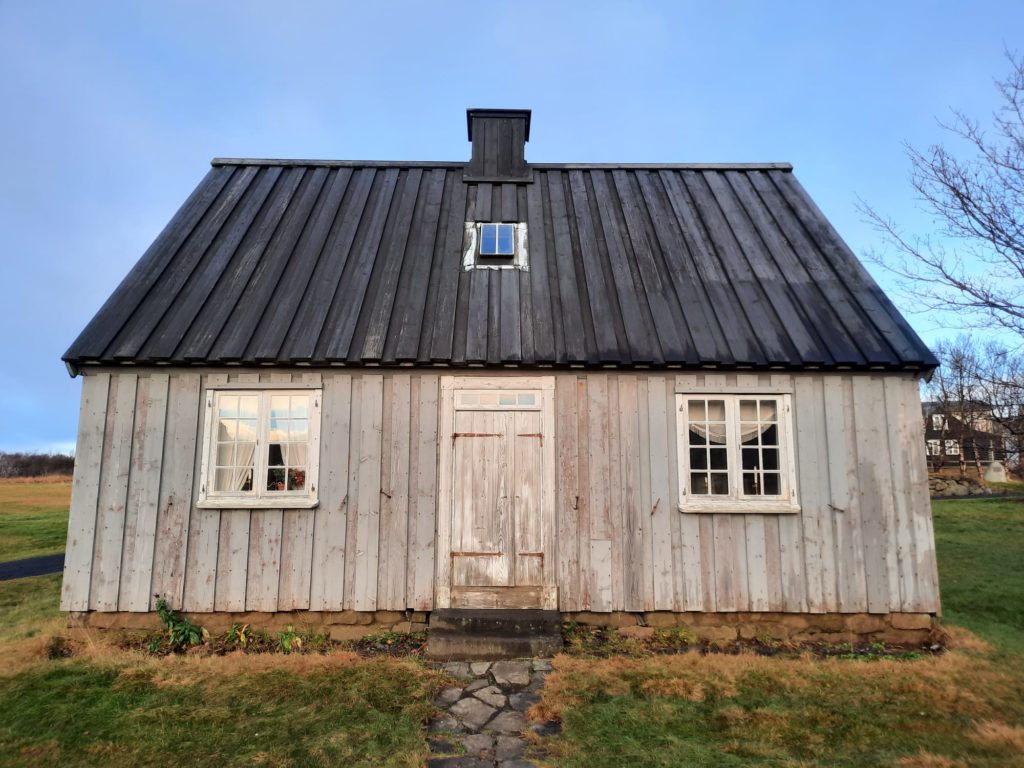
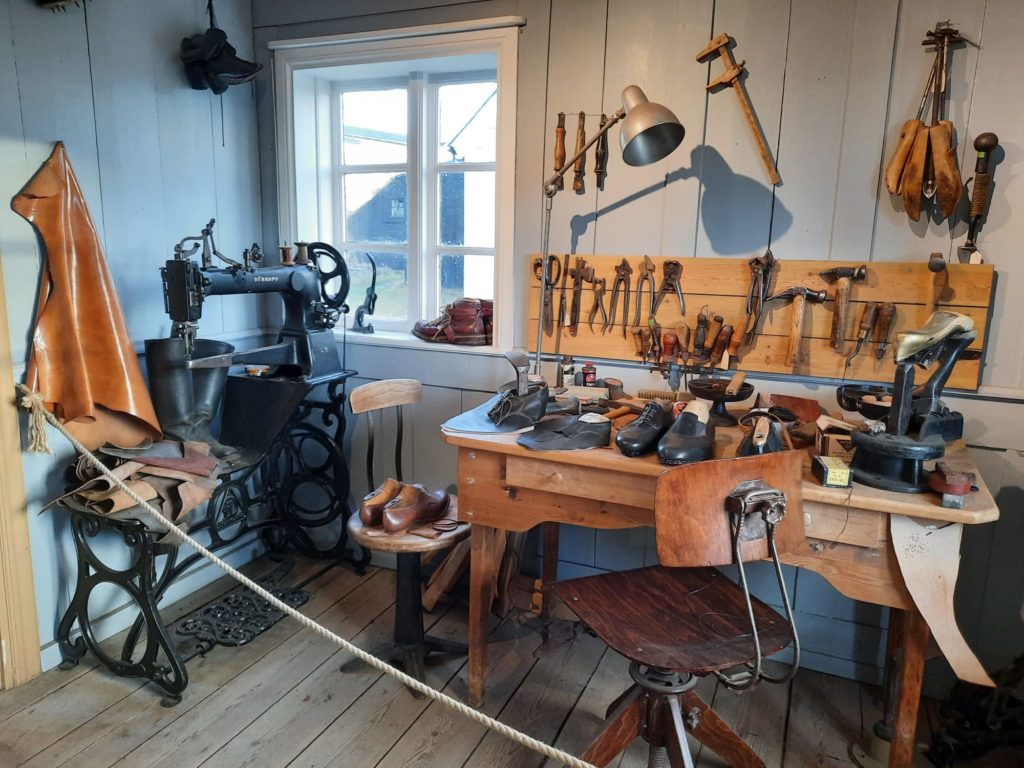
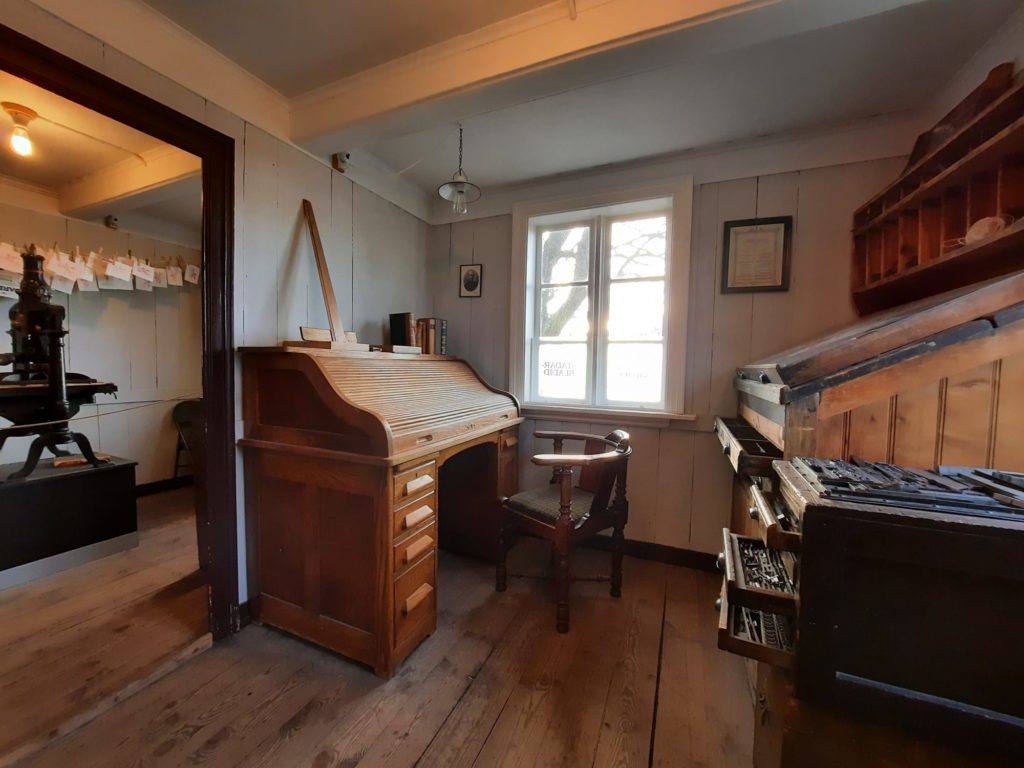

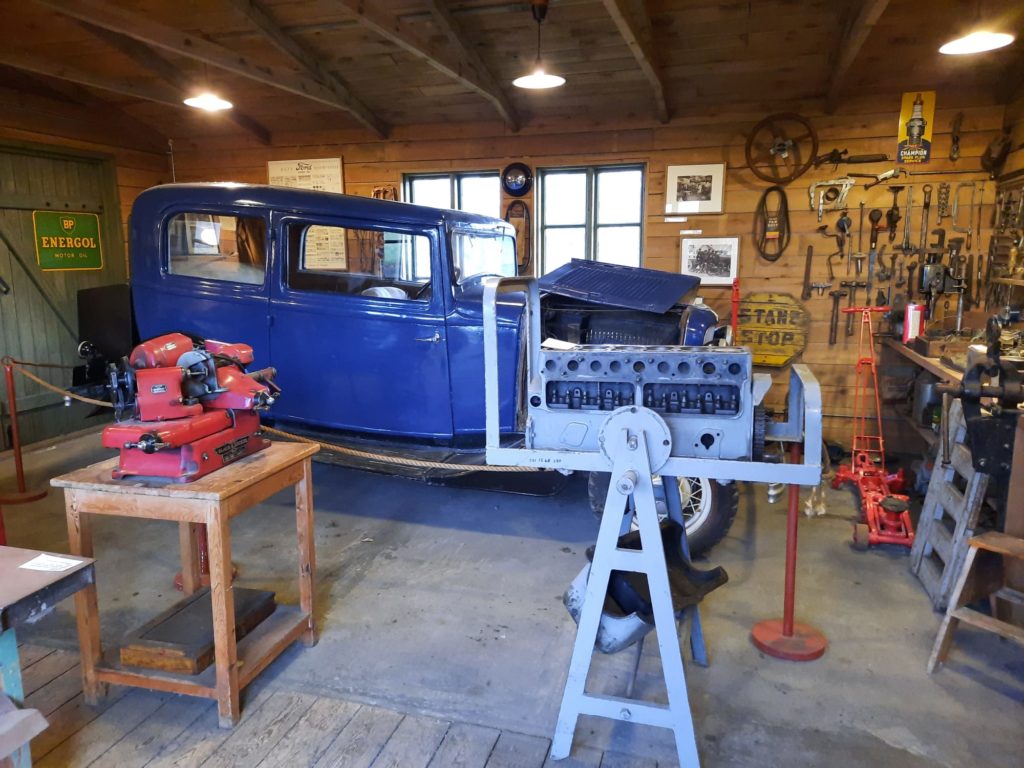
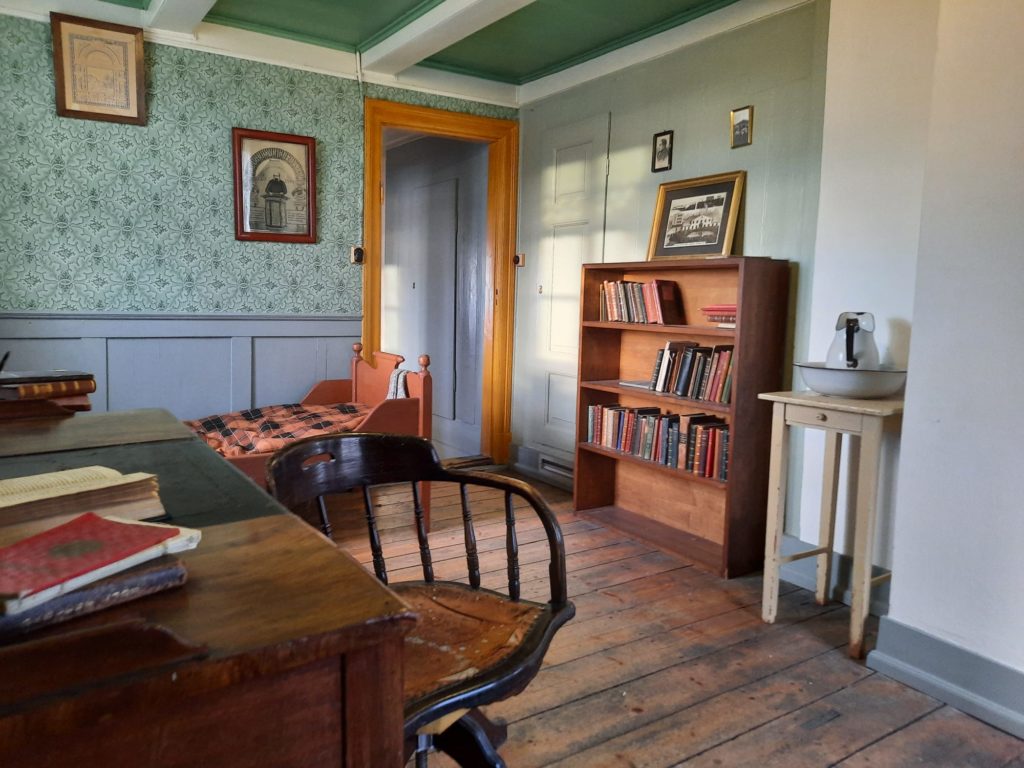
A Slice Of Life In The Past
Something I enjoyed immensely about Arbaer Open Air Museum is how relatively recent most of the buildings are. We’re mostly talking 19th Century, with some early 20th Century. Some older buildings still exist, like Aðalstræti 10 (dating to 1762). But at Arbaer they’re mostly more recent. It reminded me nicely of my home country of New Zealand, where a lot of the built history is less than 200 years old.
In the section of Arbaer Open Air Museum set up like a town centre, there are different types of buildings. There’s a church, a shop, a garage, and so on. Actually the church has had an interesting life: it became a gymnasium at some point. You can still see signs of both within.
It’s in this section that things become a bit more interactive. Rather than just looking inside and understanding how people used the space, there are activities and exhibitions. In the shop, for instance, there was an exhibition on consumer goods. And the church had a double whammy. In the main space there was a series of play houses for kids to act out what they’ve seen (really adorable). And downstairs was a visible storage space. Regular readers will remember I love these. On this occasion I had a bus to catch so I didn’t stay long, but had a quick look around. One thing I noted: there were objects on display here which represent views we don’t today consider acceptable. I’m not sure they should have been there without some kind of interpretation. But otherwise I do love a good bit of open storage!
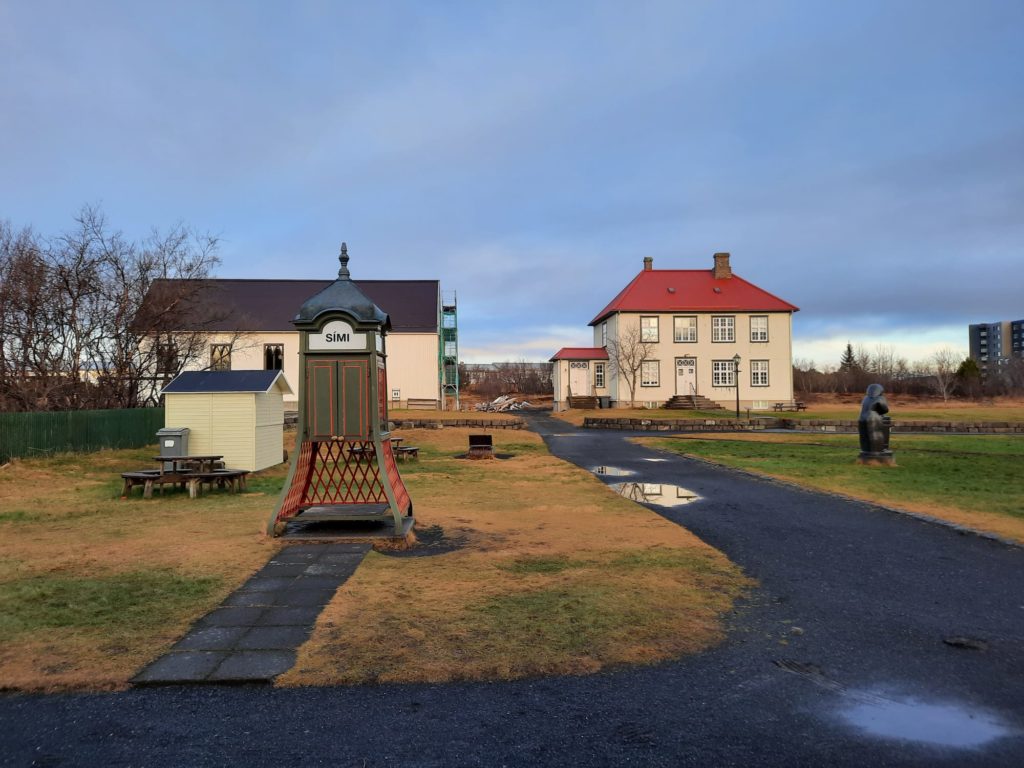
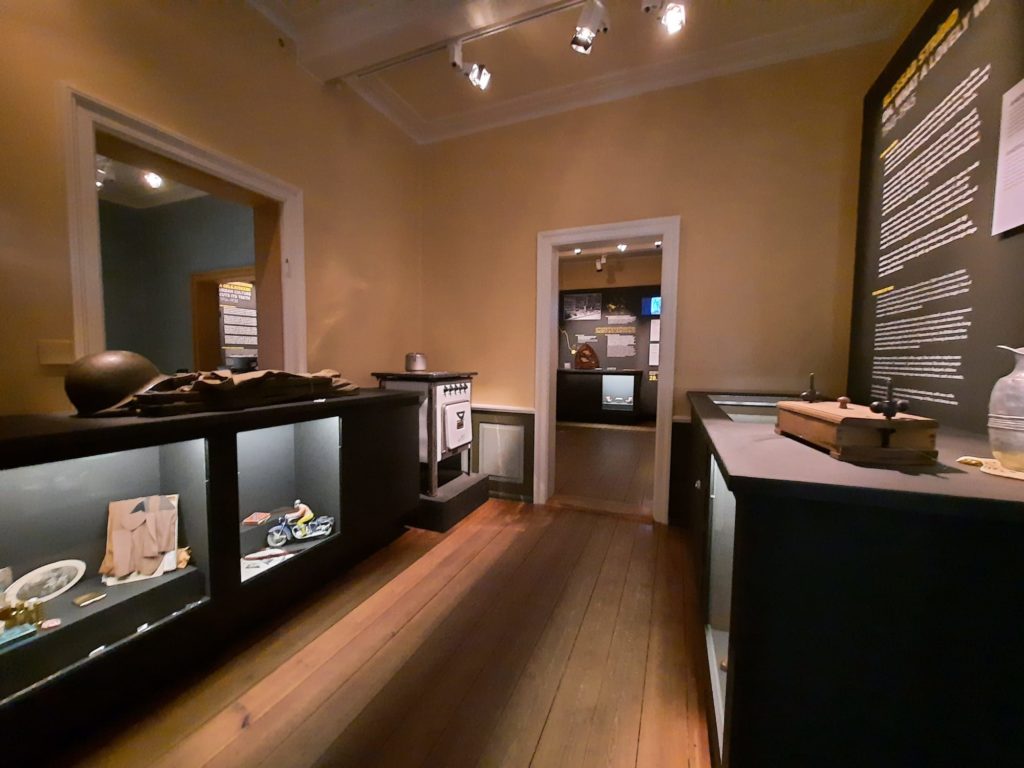
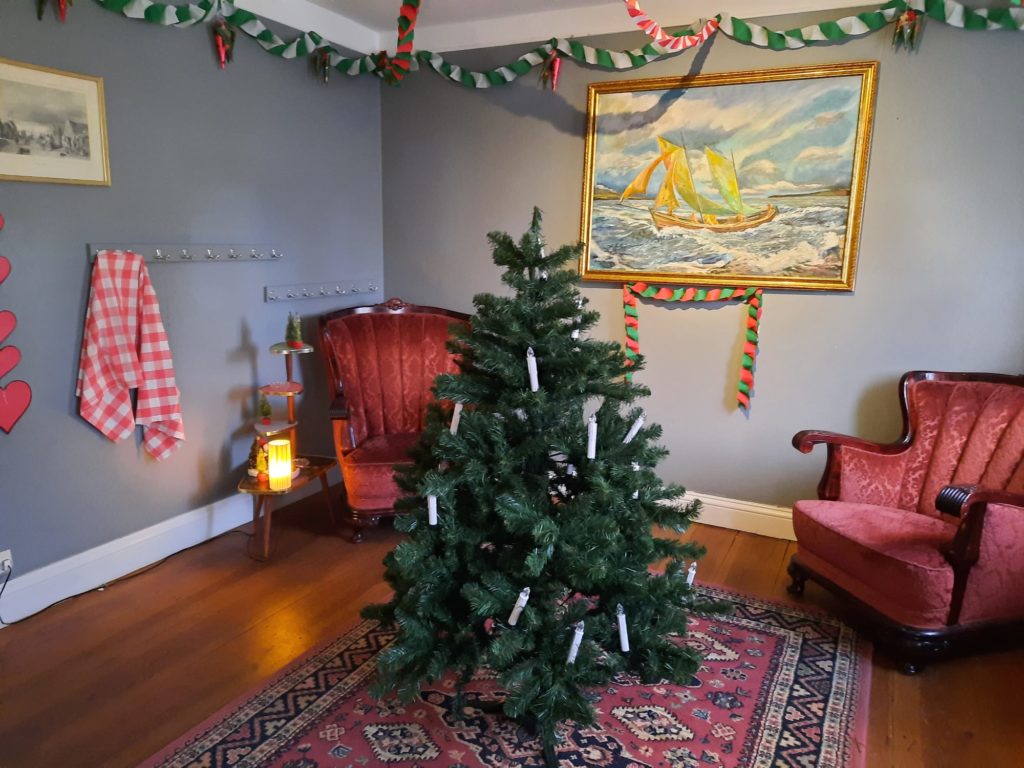

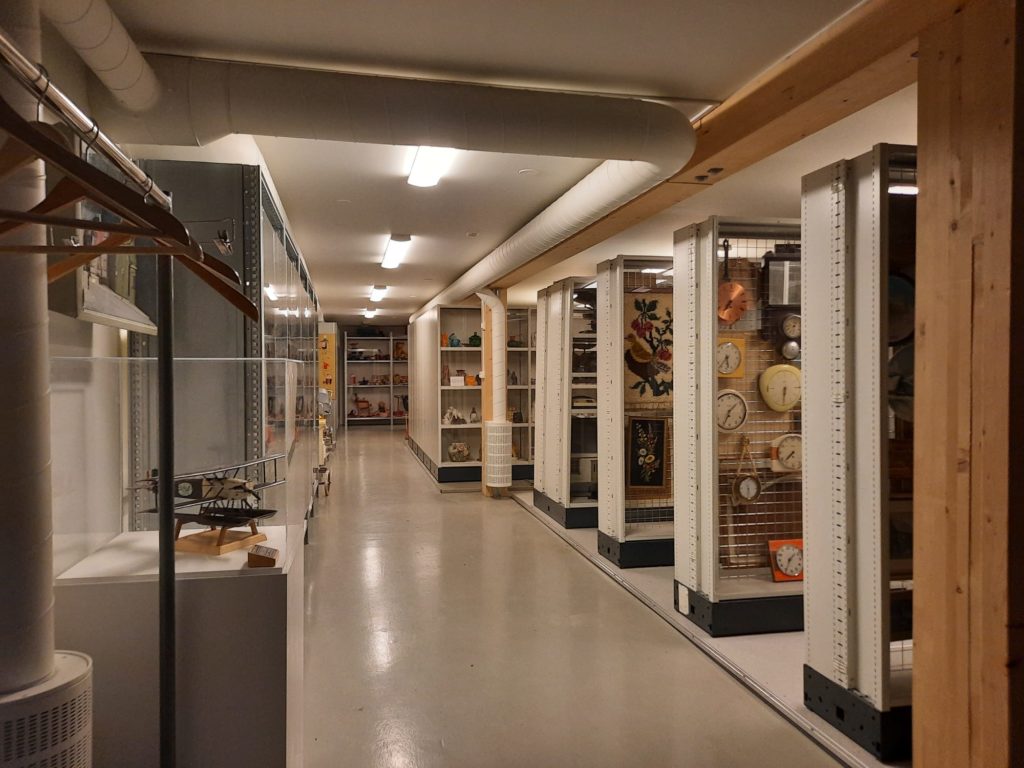
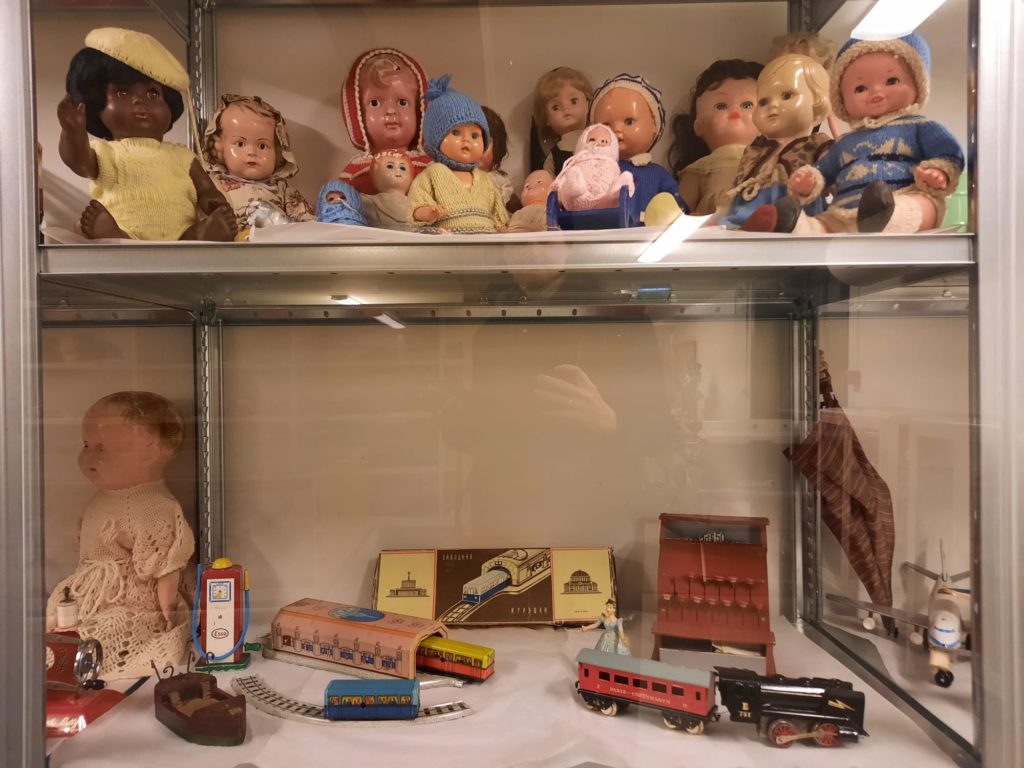
Final Thoughts On Arbaer Open Air Museum
For history enthusiasts, or those wanting to explore a museum that’s a bit different, Arbaer is a perfect pick. It’s far enough from downtown Reykjavik that you feel like you’re getting away. But close enough that it’s not too difficult to get to without a car. It’s educational, and also has the fun voyeurism of having a good poke around other people’s houses. If you can, time it so you’re there for the guided tour.
Along with the Settlement Exhibition, Arbaer Open Air Museum had me reflecting on the pace of change in Iceland. When William Morris came here in the 1870s, only about 70,000 people lived in the whole country. Reykjavik was a little, peaceful place, where people lived fairly traditional lives. No wonder Morris liked it so much, coming from London! But I digress.
This is another museum that would be a good pick with kids. For a solo adult traveller, it’s best for the history-inclined. You need a good couple of hours to explore it properly, so with the winter opening hours being 1-5PM you will want to plan wisely.
Salterton Arts Review’s rating: 4/5
Trending
If you see this after your page is loaded completely, leafletJS files are missing.


One thought on “Árbæjarsafn (Arbaer Open Air Museum), Reykjavik”